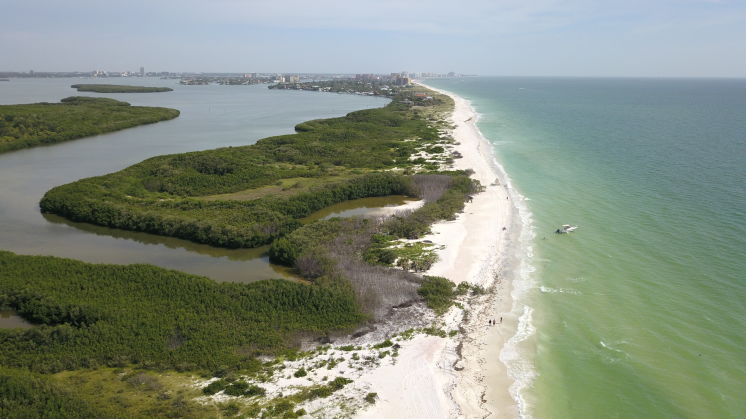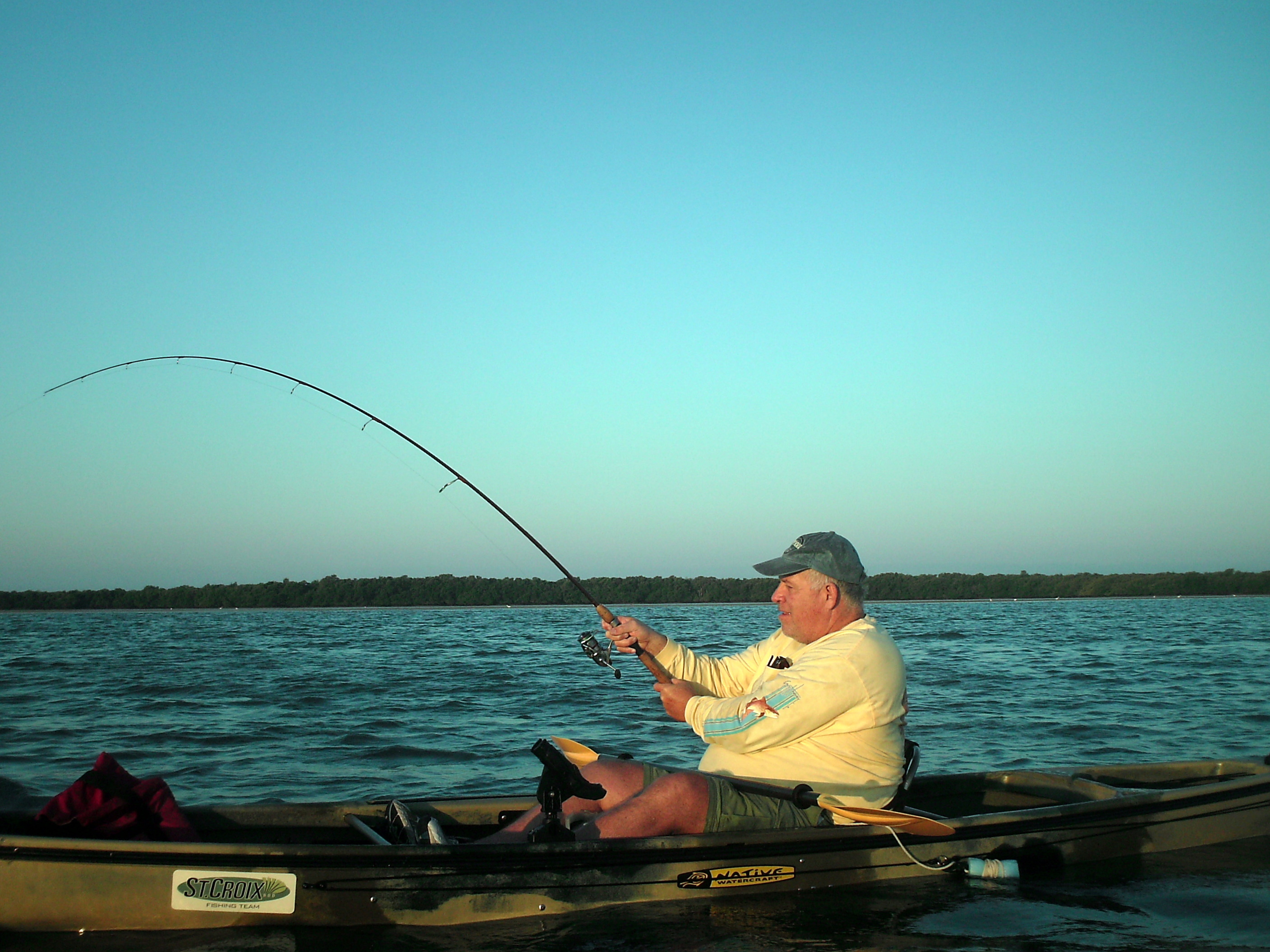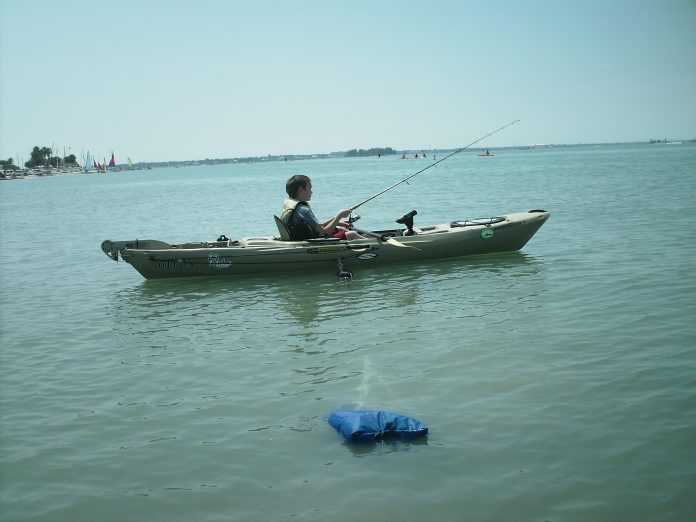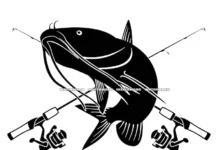Neil Taylor, Strike Three Kayak Fishing
A huge part of efficiency in kayak fishing is the decisions made on utilizing the wind (or current) to create a situation of “less paddling, more fishing.” Think about that theme and decisions you can make to achieve it.
Failure to work wind into your plans is a mistake. 99% of the time you will have to deal with it. Some simple choices will eliminate problems and create more successful fishing trips.

I think that a majority of people make things more difficult than they need to be. In boat fishing or kayak fishing, there are great advantages to making certain changes to your techniques. For the power boats, moving by drift is advantageous compared to the noise of starting or running a motor to approach fish.
“Intercept”
The Zig-zag operation of working a flat, particularly at the “middle tides” is a method of utilizing the wind to work an area, then pushing up and out to do a drift across a different section of the flat allowing the angler to methodically work the entire area and should find the location of the fish on that flat. Getting “upwind” of where you think the fish may be, you can set up when you locate them but stay on the move until you do. Do NOT spend your time continuing to make adjustments against the wind. The more time your paddle is in your hands, the less time you are fishing.
Where are you going to place the casts? Avoid casting back toward the area you’ve already drifted through. It sounds simple and it is common sense but why would you cast to an area where you’ve already blown the fish out of there? Cast to “fresh waters” where the fish have not been spooked by your presence. The smarter angler will tell you that it is most efficient to set up “up wind” of where you think the fish are located. This will yield longer casts but you can also work lures better in this situation than “cross wind.”

The design of the hull of certain boats is perfect for always having the right drift speed for fishing. There are several ways to adjust your drift direction and speed. The most notable is a rudder. Not standard on my kayaks, the rudder allows you to change the drift direction but changing the angle of the rudder. This is a strong option for most hull designs on fishing kayaks these days. A second option to change both the drift angle and speed is the Drift Chute. Deployed, the sock fills with water and creates drag, slowing the regular drift speed of your craft. Attached to your Anchor Trolley System, the angle the chute string is going off the craft will determine the direction the craft will face. A similar option: “The folded up anchor.” The claw anchor with all the prongs folded in will usually drag slowly is there is adequate wind or current.

In lighter wind situations: A major trick to not having the boat swing perpendicular to the wind? Get it stopped for your drift. That buys you a lot of extra time before the wind plays on the stern and swings the boat. You can make small paddle strokes to correct the direction you are facing but you will face that direction a significant amount of time IF you have stopped your drift completely.
Learn your wind patterns for your local area:
Around West Central Florida: For a large portion of the year, the predominant breeze in the afternoon will be out of the west. Factoring that into a plan, it’s best to finish a trip off to the west of a launch. Also a consideration: Air and water temperatures are closest before the sun rises. Making a longer paddle before the sun is up often eliminates covering some of that distance in some wind.
The raised areas of land and trees, if there is enough water up against them, are the reason for selection of that site for launching/fishing. You will pick up some wind break a certain distance from the trees. But if you can get up right against them it can be dead flat calm where you’re paddling
If you consider the regional location of Tampa Bay proper versus areas like Bunces, Dunedin, Clearwater. You’ve eliminated the higher currents in most locations inside the Bay. Then the site selection has everything to do with wind direction.
Another item to consider when traveling by kayak: Distance. If you can plan to be going in the same direction as the wind, that is ideal. For every yard you go farther from the launch, you have to go that far back. Factoring in the wind, this can be a much longer trip. Getting correct wind forecasts for both direction and speed can make for an easier day if you plan right. In many situations, the wind direction means I will be paddling in no wind at all because I can tuck behind islands and not be out in the breeze.
A stronger paddler’s going to be able to beat the wind. I used to make long paddles in the wind to access spots I wanted to go. With other options always available the obvious question became “why?” Those choices up to the individual, if it is an adventure you want, make long paddles in open waters. If you want to spend more time fishing, make different decisions.
Neil Taylor
Owner and guide: www.strikethreekayakfishing.com
(Cell) 727-692-6345 LivelyBaits@aol.com
Owner and site administrator: www.capmel.com
- The Neil Blog… - July 26, 2023
- The Catfish - July 26, 2023
- update - July 22, 2023











